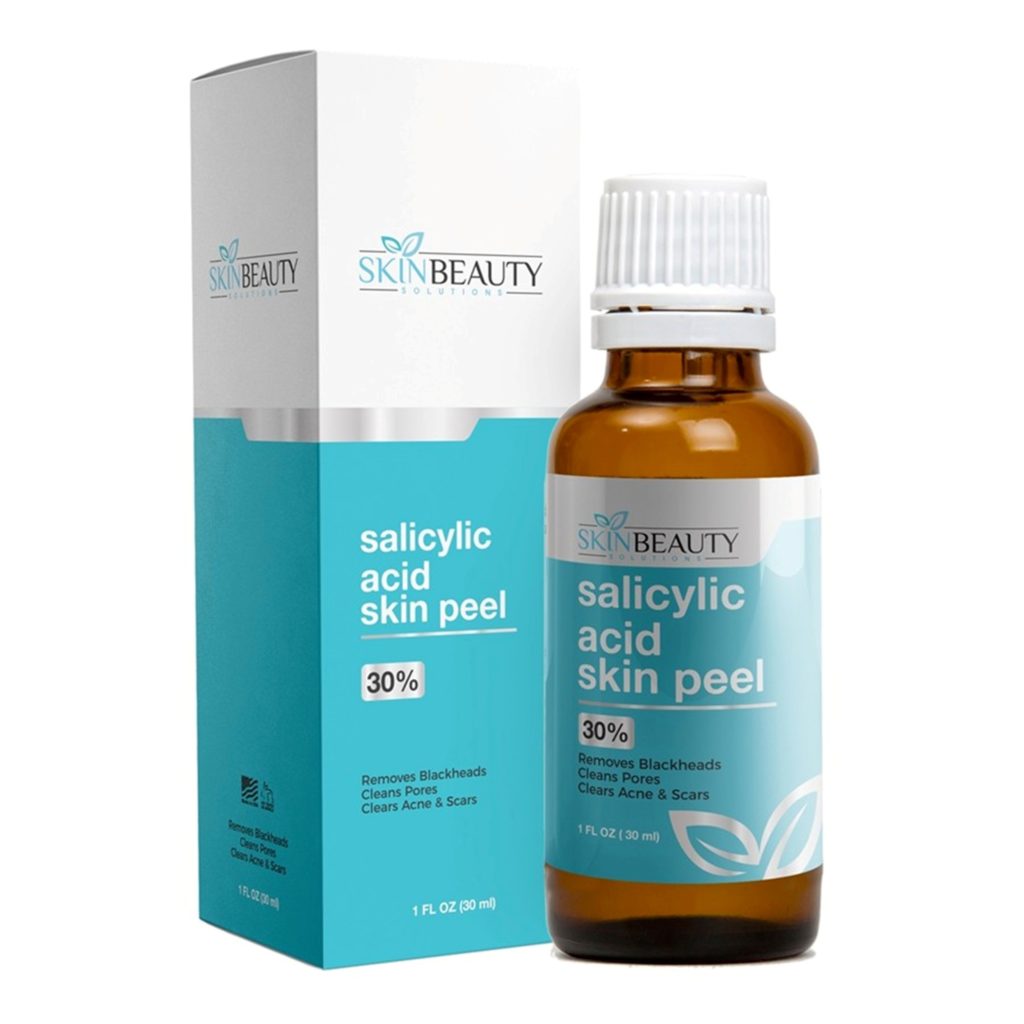SALICYLIC ACID

Definition: Salicylic acid is a beta hydroxy acid commonly used to treat comedonal or non-inflamed acne. [1] It is a popular ingredient in many over-the-counter products for acne and is found in lotions, creams, cleansers, medicated treatment pads, and toners. [1]
Salicylic acid is also used to treat other skin disorders including dandruff, psoriasis, calluses, corns, warts, and more. [4]
What is Acne?
When follicles (often called pores) get blocked by sebum (oil) which normally drains to the surface and bacteria begins to grow, acne usually results. Both whiteheads and blackheads start out as microcomedones. [5] Microcomedones become non-inflamed skin blemishes called comedones. There are two types of these, whiteheads and blackheads. When the trapped sebum and bacteria stay below the skin surface, a whiteheadis formed. [5] A blackhead occurs when the pore opens to the surface, and the sebum, which contains the skin pigment melanin, oxidizes and turns a brown/black color. It is not dirt and can not be washed away. Blackheads persist for a long time because the contents very slowly drain to the surface. [5] A blackhead or whitehead can release its contents to the surface and heal. Or, the follicle wall can rupture and inflammatory acne can ensue. [5]
How Works
Salicylic acid helps correct the abnormal desquamation (the natural process in which skin cells are sloughed away and replaced) that occurs in acne-prone skin. [1] It works as an exfoliant and promotes the sloughing away of dead skin cells so they can be replaced with new, healthy cells.
Salicylic acid is especially helpful in treating acne because of its ability to penetrate the follicle. It encourages the shedding of dead skin cells from within the follicle, helping keep the pores clear of cellular debris. [1] Because it sloughs off these skin cells, Salicylic acid reduces the number of pore blockages and breakouts on the skin.
Common Directions
Over-the-counter salicylic acid products are found in strengths ranging from 0.5% to 2%. Typical use consists of a once-daily application. Using several salicylic acid products will excessively dry the skin, and will not clear acne any faster. [1] After the skin is sufficiently clear, a salicylic acid wash or scrub can often be used in place of gels or pads (these usually contain more salicylic acid) to maintain clear skin. [1]
As with most topical treatment medications, salicylic acid must be applied over the entire face or affected body area. Using the product only as a spot treatment on visible breakouts is ineffective. Apply over the entire affected area so the medication can prevent pore blockages and help clear microcomedones (tiny blemishes too small yet to see.) [1]
Continuous use of a salicylic acid product is necessary to maintain positive results. If you stop using your treatment product, the pores will again clog with excess oil and dead cells, and acne can return. [1]
Some common products containing salicylic acid include:
- Oxy products
- Noxzema Anti-Acne Gel
- Noxzema Anti-Acne Pads
- Stridex products
- Dermalogica Medicated Clearing Gel[1]
Possible Side Effects
Salicylic acid can cause stinging, burning, and skin irritation. Common side effects from overuse also include dryness, peeling, and flaking of the skin. These side effects can usually be effectively controlled with daily use of an oil-free moisturizer [1], and if the side effects persist decreasing the amount and number of times you use the Salicylic acid containing product can resolve these side effects.
Using salicylic acid in conjunction with other acne treatment products such as retinoids (Retin A, Differin) or benzoyl peroxide can increase dryness, peeling, or stinging. [1] Alpha hydroxyl acid and retinoid peels can help exfoliate the skin, and improve its look and texture. [3]
Use of concentrated solutions of salicylic acid may cause hyperpigmentation on unprotected skin for those with darker skin types (Fitzpatrick phototypes IV, V, VI), as well as with the lack of use of a broad spectrum sunblock. [2]
References
- http://acne.about.com/od/acnetreatments/a/salicylicacid.htm
- Grimes P.E. (1999). “The Safety and Efficacy of Salicylic Acid Chemical Peels in Darker Racial-ethnic Groups”. Dermatologic Surgery 25 (1): 18–22.
- http://www.acne.org/whatisacne.html


